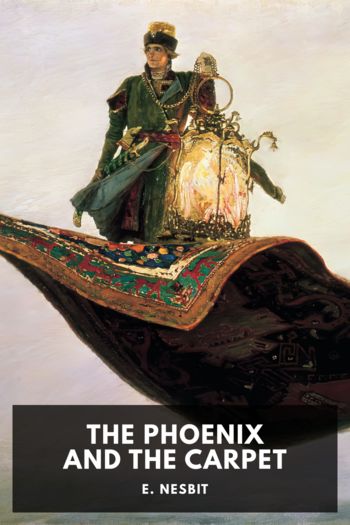Hitler's Terror Weapons by Brooks, Geoffrey (the best books of all time TXT) 📕

Read free book «Hitler's Terror Weapons by Brooks, Geoffrey (the best books of all time TXT) 📕» - read online or download for free at americanlibrarybooks.com
Read book online «Hitler's Terror Weapons by Brooks, Geoffrey (the best books of all time TXT) 📕». Author - Brooks, Geoffrey
The Leipzig L-II Experiment
Professor Heisenberg returned to Leipzig University where, on 28 October 1941, he carried out experiment L-II59. An aluminium sphere was filled with concentric alternate layers of uranium oxide and 150 litres of heavy water. In the centre was placed a nickel ball of 1.95-cm diameter containing a radium-beryllium Präparat which sprayed neutrons in all directions. Instruments were positioned around the sphere to measure the neutron multiplication and a neutron increment of 10% was recorded in the interior of the sphere, although this was lost to the aluminium at the periphery.
This stacked design of pile has been described as a little peculiar. Since the Präparat was a ball at the very centre of the sphere, the neutrons would radiate out through the alternating layers diagonally. This would not be a good way to obtain neutron multiplication, but what a central neutron source does permit, however, is for the pile to be dismantled at the end of the experiment so that isotopic transformations in each of the uranium layers can be measured along their length and with reference to their position in the sphere. Such a proceeding would be more useful for gauging where plutonium formed than for planning a heat reactor. Heisenberg’s explanation was that neutrons radiating diagonally passed through alternate layers in which the heavy water layers were three to four times wider than the uranium layers. This presented a better opportunity for the neutrons to be slowed optimally for fission, since losses of medium-fast, or partially slowed, neutrons to the U238 capture bands were high. The measurements would also show where neutron capture was thickest in the uranium, and, if such was the information required, enable the optimum velocity of a neutron for capture by the U235 resonances to be established. That would also be useful information if the real purpose of the experiment was to work out the best arrangement for breeding plutonium in the uranium material.
Heisenberg admitted that the Leipzig experiments were “unusual” insofar as:
“we put the neutron source in the middle of a sphere of heavy water, then we measured the capture of the neutrons in the middle of the sphere. It was the diffusion of neutrons from the centre to the outside which we measured.”60
The purpose of placing the neutron source at the centre of the apparatus, according to a scientific paper he wrote in 1943, was:
“to measure the volume of neutrons escaping at the surface of the sphere so as to determine whether there was a surplus over the neutrons emitted by the Präparat. If there was a surplus, then therein would lie the proof that a bigger construction would eventually lead to a critical uranium pile.”61
Further Concerns about the Houtermans Paper
On 28 November 1941 Heisenberg led a stream of notable visitors to the Lichterfelde-Ost laboratory of Professor von Ardenne. According to the Swiss historian Robert Jungk62 he had a further heart-to-heart talk with Professor Houtermans in company with Professor von Weizsäcker. This was a long, frank discussion about the work Houtermans had been doing for von Ardenne, and in conclusion it seems to have been agreed that their overwhelming priority was to conceal from the Government departments involved “the imminent feasibility of manufacturing atomic weapons” by which, as we have seen, he meant Pu239 in a low temperature reactor for a bomb.
On 10 December Otto Hahn and three colleagues from the KWI for Chemistry also called in, but what was discussed was not revealed in an official biography of Hahn63, although it appears likely that Houtermans had already been told by Ohnesorge by that date what the Führer required from him. Early in December 1941 Houtermans had a soul-searching conversation with his protector Professor Max von Laue on the subject of a secret assignation he had been given and in connection with this task he is supposed to have sent a cryptic telegram (from a wartime Germany controlled by the Gestapo) to his former colleague Eugene P. Wigner in the United States. The message read, “Hurry! We’re nearly there!” Obviously Houtermans believed in living dangerously.
Despite all the long faces, the Jewish Houtermans must have known that, at least as far as he was concerned, there was a certain inevitability about it all and so he knuckled down to the task in hand.
The Nuclear Project is Wound Down
On 3 December 1941, the Minister for Armaments, Dr Fritz Todt, notified Hitler of the faltering state of the military economy and advised him bluntly that any unplanned future expansion would have to be financed from the budgets of other departments. Consequently Professor Erich Schumann, the Director of Military Research at the Heereswaffenamt, ordered a reappraisal of the uranium project and warned leading scientists that the continued financial support of the War Ministry for the nuclear project was dependent on the promise of a definite military application in the short term.
On 16 December 1941, following a conference of Directors of the various Physics Institutes





Comments (0)